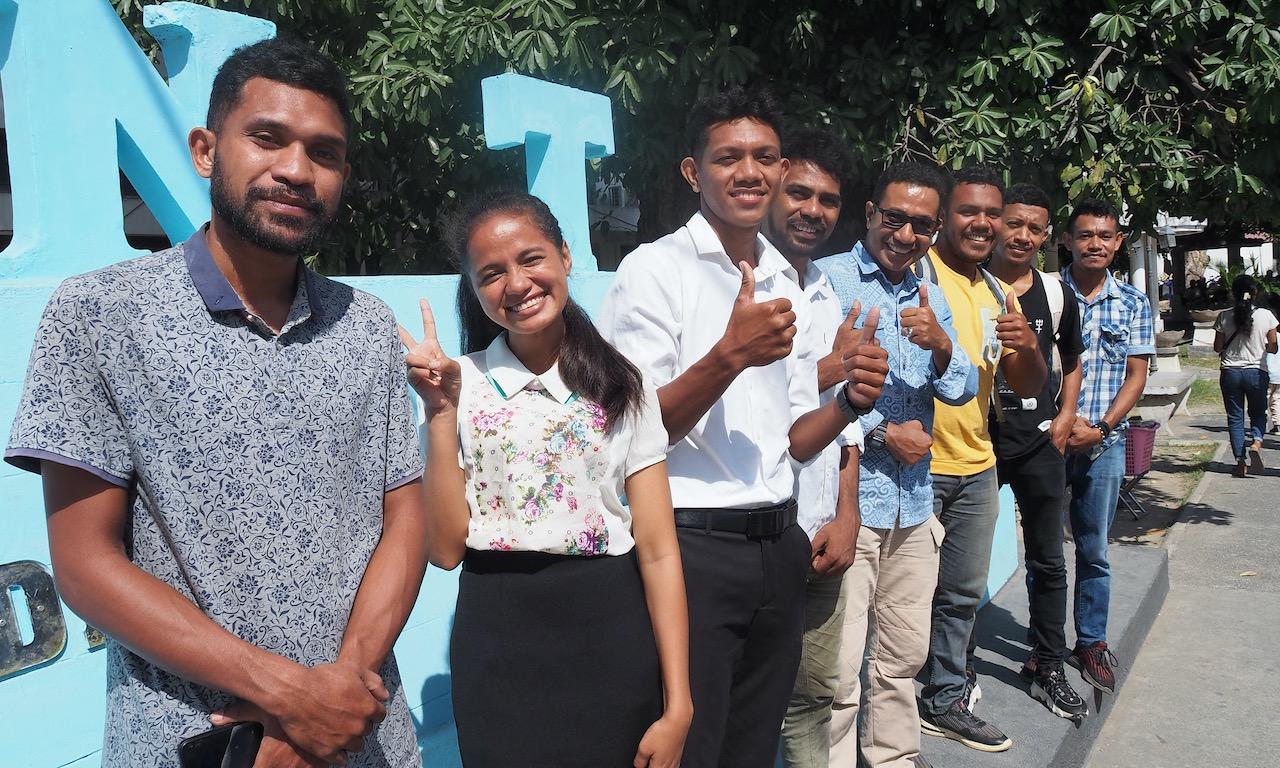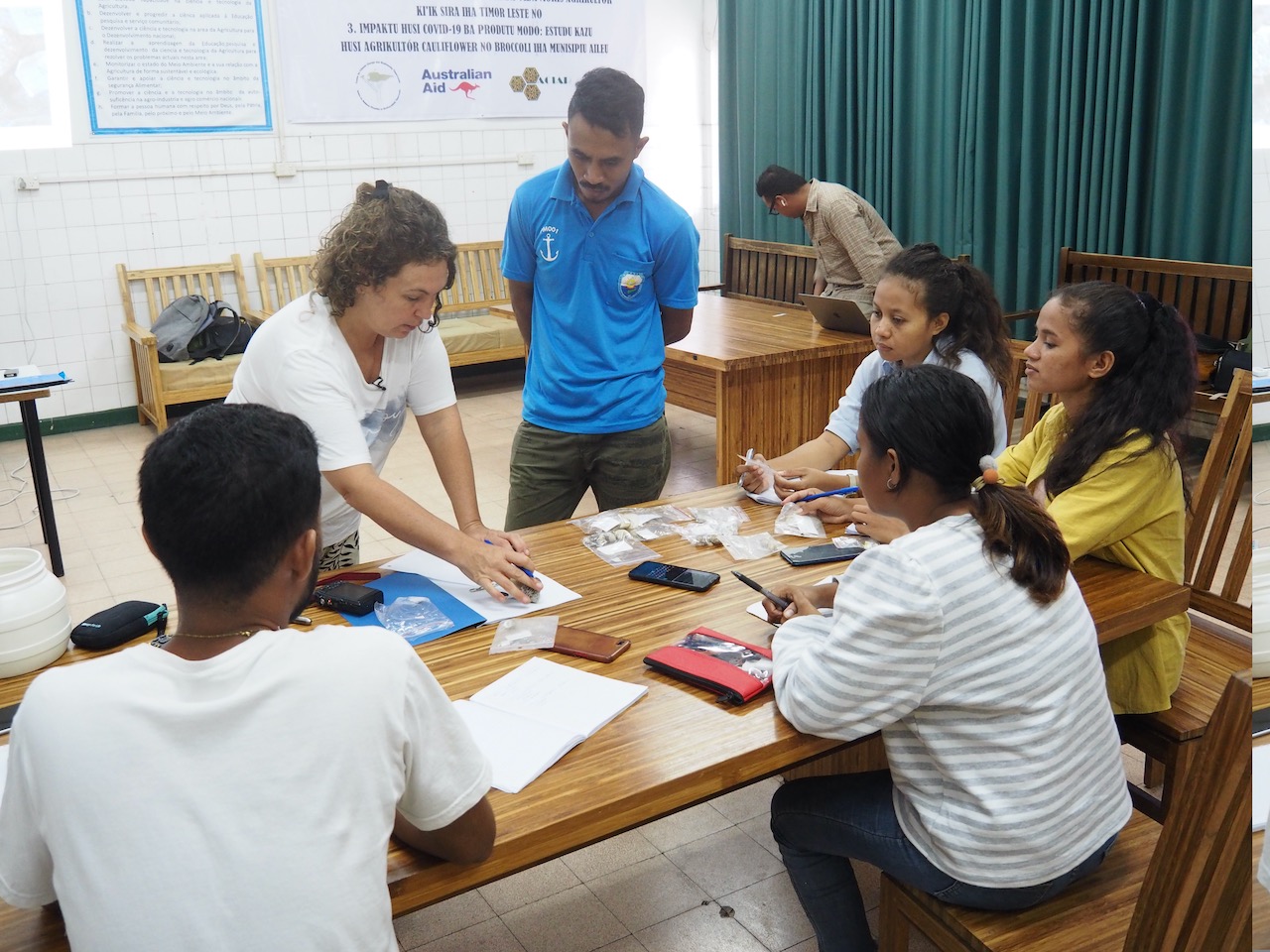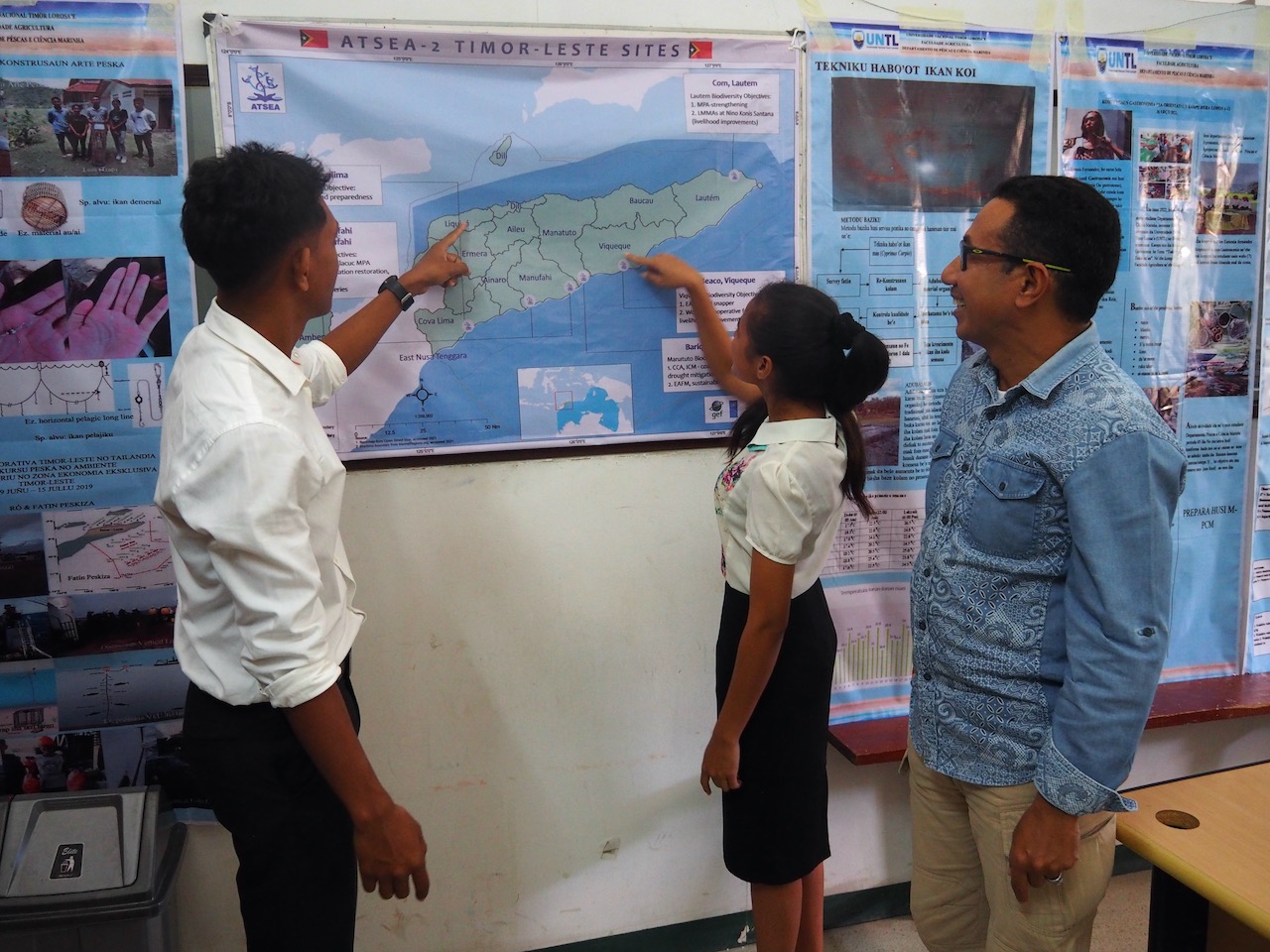
WorldFish and the National University of Timor-Leste (UNTL) have signed a new 10-year agreement to collaborate on research and training in aquatic sciences. As a first action, WorldFish staff have been training and supporting 14 students to undertake their final-year research projects, enabling them to be among the first graduates from the Department of Fisheries and Marine Science.
In a large classroom in the bustling campus of the national university, six marine science students sit around a table.
They scribble as a trainer speaks, filling pages with notes.
“Ita presiza hatene naran locale no scientific. Halo foto especies no mos husi habitat. Peskador hatene fatin hela.”
“You need to collect the local and scientific names. Take photos of the species and their habitat. You have to ask and inquire about fishers’ knowledge of species lifestyles, fishing strategies and techniques,” says trainer Ariadna Burgos, an ethnoecologist.
The fifth-year students are learning how to collect data on marine invertebrates to prepare for their final-year research projects.
“The one-day workshop covered technical knowledge, such as the different types of species, as well as the exact data they must gather when out in the field,” said Burgos, a visiting scientist with WorldFish and Marie Sklodowska-Curie Fellow.

Each student is required to do an individual research project in their final year of study.
“But it can be hard for students to find a project or suitable funding to undertake their research,” said Burgos.
“By providing training and five months of funding for fieldwork and writing their dissertation, WorldFish is assisting the students to graduate by getting practical, hands-on experience and personalized supervision.”
‘Dedicate ourselves’ to understand marine resources
In 2018, UNTL established a Department of Fisheries and Marine Science under the Faculty of Agriculture.
“Timor-Leste is a small island developing state, with 12 of its 14 municipalities bounded by coastal waters,” said Mario Cabral, whose doctorate research examined ocean governance stewardship in Timor-Leste.
“By having this new department, we can dedicate ourselves and the next generation to understanding and protecting our marine resources.”
In the first year, 120 students enrolled in the department. Today, there are 600 students enrolled at varying stages of the degree.
Besides the six students collecting data on marine invertebrates, another eight students are being supported by WorldFish to undertake research into co-management.
“These 14 students will be among the first 20 students to graduate in December 2022 with a Bachelor of Fisheries and Marine Science,” said Cabral.
WorldFish has run a series of theoretical and practical trainings for the students, including five days of fieldwork training in Atekru, Atauro.
Funding is provided by three WorldFish projects: Nutrition-Sensitive Fisheries Management (NSFM; funded by Australian Centre of International Agricultural Research), Fisheries Sector Support Program Phase 2 (funded by Norwegian Ministry of Foreign Affairs) and Marine Invertebrate Small-Scale Fisheries in Timor-Leste (funded by the European Union and run in collaboration with the French National Research Institute for Sustainable Development).
“We hope this collaboration with WorldFish can continue to enhance fisheries research and scientific knowledge and provide students with further job and study opportunities,” said Cabral.
Looking into marine management
In Timor-Leste, there are 19 existing marine protected areas (MPA) and locally managed marine areas—12 on Atauro Island, seven on the mainland—and another five are being set up.
Even more MPAs and locally managed areas will be established as Timor-Leste works toward protecting 10 percent of its coastal and marine areas, in line with Aichi Biodiversity Target 11.
One of the students, Otelio dos Santos, will conduct research in Vatuvou town in Liquica municipality.
“My research will explore how the community was engaged in establishing an MPA and its impacts on local livelihoods,” said the 23-year-old.
“I’m grateful for the training from WorldFish as it has enhanced my knowledge and given me the skills to run my own research.”

Findings from the eight co-management students’ research will feed into a best practice guide, to be developed by WorldFish and partners, for future implementation and practice around managed marine areas and resources.
“It is vital that we really understand local perceptions and critically reflect on the impacts of managed marine areas to improve the approach to better meet community needs,” said Burgos.
“The guide will help WorldFish, non-government organisations and others when supporting communities to manage their local waters and their resources.”
Building a holistic picture of fisheries
In Timor-Leste, marine invertebrates account for 15 percent of the total catch from marine waters.
“Most data collected by the government and researchers is focused on boat-based fisheries, which is dominated by men,” said David Mills, country lead for WorldFish Timor-Leste and NSFM project leader.
“Whereas women are more involved in foot-based fisheries, such as gleaning, so their contributions are often overlooked.”
WorldFish research published in 2020 showed that when gleaning is accounted for, as many as 80 percent of coastal households are involved in fishing.
Gloria da Silva’s research will look at gleaning activities in Fatudere town in Viqueque, on the south coast of Timor-Leste.
“I will collect data on the species harvested from intertidal areas in low tide and the techniques used,” said the 22-year-old.
“I’m proud to be involved in this collaboration with WorldFish as it allows me to participate more closely with the community so we can learn together.”
The six students’ research will help to build a more holistic picture of fisheries in Timor-Leste.
“The findings will feed into the Peskas monitoring system and a research publication by WorldFish, shining a light on what species are being caught, by who and the nutritional value of the catch,” said WorldFish research analyst Joctan Lopes.
“This will give a clearer picture of the huge diversity of marine species being targeted and their immense nutritional benefits to households in Timor-Leste.”
